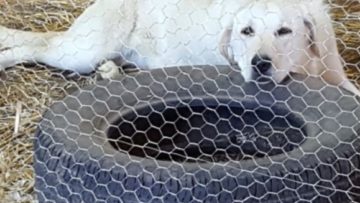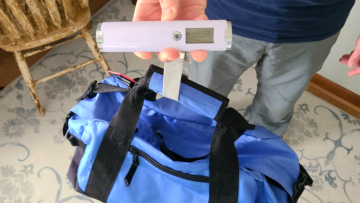This post contains credit card referral links.
We may earn points or miles based on clicks and sign-ups.
Thank you for helping us travel the world.
In Part 1 of this post series, we talked about things to do if you find yourself a victim of theft while traveling abroad. In Part 2, we explained our approach to taking credit cards on our adventures as one example of how to prepare for such unfortunate circumstances. In this post, we’ll use another example of how prevention is key to preparing to head out into the wild.
We like to travel as lightly as possible when we’re on our adventures. Usually, that means a carry-on suitcase and a backpack. Our carry-on bags are fairly standard Samsonite bags and have served us well. Our backpacks, on the other hand, are a little different.
To be totally transparent, usually Jason travels with two backpacks: one inside the other. The first is a larger backpack that serves as a second carry-on and can hold a ridiculous amount of stuff (thanks, Osprey!). That can be helpful if we’re going on side trips during our travels. For example, maybe we’re going to one place for 4 days, but we’re planning an overnight excursion somewhere else during that stay. We don’t really want to pack up all our stuff and take it with us, so we’ll instead use our oversized backpacks as our suitcases. We take our valuable stuff, one change of clothes, the drone, and so on and it all goes in the backpack. Everything else stays in our regular hotel room while we’re gone (never leave anything that’s a pain to replace).

Jason’s other backpack is a smaller travel pack that has different things built into it that helps to prevent it from falling into the wrong hands. There are an increasing number of brands that have travel-specific packs. Recently, Jason has been using a lighter Osprey hiking daypack to carry his computer to boutique shows and conferences, but he tends to prefer his Pacsafe backpack when we’re out and about in a city.
Many of Pacsafe’s backpacks have several security features that give us peace of mind. For example, the main shoulder straps have thin metal cables running through them, making it harder for someone to use a knife (or whatever) to slash your strap and steal your bag off you (yep, this happens). The zippers for each compartment also have clips on them, so when you zip the pack closed, you can lock the two zippers together making it harder to access the interior without your knowledge. Several of the interior pockets have RFID-blocking material to protect our passports, credit cards, and the like. One of the straps also has a locking clip that attaches it to the bottom of the pack. If we want to go to lunch, we can wrap the strap around a table leg or chair and lock the clip. That makes it hard for a would-be thief to snatch the pack off the chair next to us and run because they’d have to take the whole chair with them. Tasha has a travel purse that has similar security features, too.
One thing to remember is that most thieves are looking for easy marks. Is your purse open and all your valuables on clear display? Are you walking around with an unzipped backpack that’s leaving your laptop clearly visible for all to see? Is your phone in your back pocket but only barely? Seriously, this happens more than you might think. I’ve had friends have their phones snatched from their bare hands as they’re using them. It’s wild.
But, you don’t necessarily have to turn yourself into Fort Knox, you just need to not be the easiest opportunity walking around. Do things with the bags you already have – making sure zippers are closed, using something to clip your zippers together, putting your purse across your body and in front of your rather than behind you or just over one shoulder, using those straps that come on most backpacks to tie your pack to your waist – make you a less obvious and ideal target. You can also get travel bags like we’ve mentioned above, but you still need to pay attention and actually use those security features. More often than not, that means you and your things will be left alone. And that, is exactly what we’re after.
Happy Travels.




